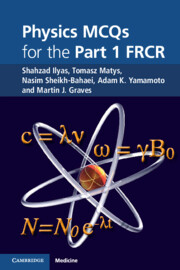Book contents
- Frontmatter
- Contents
- Preface
- Acknowledgements
- 1 Basic physics
- 2 Radiation hazards and protection
- 3 Imaging with X-rays
- 4 Film-screen radiography
- 5 Digital radiography
- 6 Fluoroscopy and mammography
- 7 Nuclear medicine
- 8 Computed tomography
- 9 Imaging with ultrasound
- 10 Magnetic resonance imaging
- Bibliography
- Index
4 - Film-screen radiography
Published online by Cambridge University Press: 05 July 2011
- Frontmatter
- Contents
- Preface
- Acknowledgements
- 1 Basic physics
- 2 Radiation hazards and protection
- 3 Imaging with X-rays
- 4 Film-screen radiography
- 5 Digital radiography
- 6 Fluoroscopy and mammography
- 7 Nuclear medicine
- 8 Computed tomography
- 9 Imaging with ultrasound
- 10 Magnetic resonance imaging
- Bibliography
- Index
Summary
Concerning the construction and processing of radiographic film:
Most films typically have a single layer of emulsion
An emulsion of silver iodide is most commonly used
The grain size of the emulsion is directly related to the speed of the film
Production of the latent image occurs independently of the cation component of the emulsion
Altering the order of the processing of exposed film does not significantly affect the overall image quality
Concerning the properties of radiographic film:
Optical density is a measure of film blackening based on the degree of transmission of incident light on the film
Using double-sided emulsion has no effect on optical density
The greater the optical density of a film, the lower the intensity of the transmitted light beam
A useful range of optical densities is approximately 0.25–4
Different optical densities in areas within the same film are what produce image contrast when viewing the image
Concerning the properties of radiographic film, with reference to the characteristic curve:
‘Base plus fog’ refers to the optical density of unexposed, undeveloped emulsion
Films with high speed are less sensitive to changes in exposure
Film latitude refers to the range of exposures producing film darkening within the useful optical density range
An increase in film gamma decreases film latitude
[…]
- Type
- Chapter
- Information
- Physics MCQs for the Part 1 FRCR , pp. 41 - 55Publisher: Cambridge University PressPrint publication year: 2011



